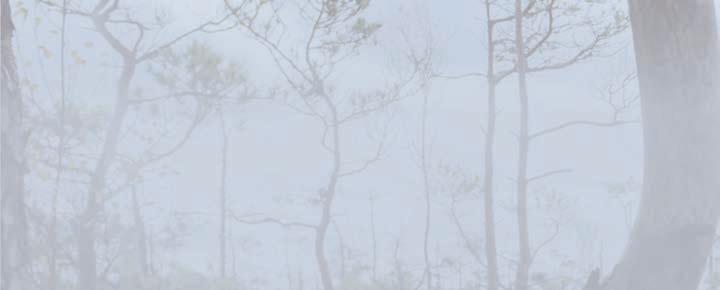3 minute read
Freezing for the Future
Next Article
Diverse crop conservation at the Svalbard Seed Vault
by Becky Forsberg, Guest Services Manager
A SCANT SIXTY MILES FROM THE NORTH POLE lies the Svalbard archipelago in northern Norway. The area is best known for its large population of Svalbard polar bears, with approximately 270 bears in the area. With its solid ice shields, deep centuries-old permafrost, and minimal human development, the environment of this arctic region is ideal for species like polar bears to thrive. It is also an ideal spot for a deep freezer full of important seed specimens.
Nestled almost 400 feet (120 meters) into the Arctic permafrost sits more than one million seeds. The seeds are stored in the Svalbard Global Seed Vault, a protective seed archive owned by Norway. The vault is operated by NordGen, a genebank supervised by the Nordic Council of Ministers. Genebanks promote and conserve sustainable genetic resources of plants—especially of those important to food and agriculture. In partnership with the Norwegian Ministry of Food and Agriculture and Crop Trust (an independent international food sustainability organization), the Svalbard vault is the Nordic region’s answer to crop diversity and food security. Around the world, most seed banks face challenges with cost, climate change, wars, and political opposition, making it hard to maintain sustainable preservation of their seed samples. The Svalbard vault—occasionally nicknamed the “Doomsday” vault—was built to address those challenges while still providing a protected, large-scale backup facility for seed storage.
There are over 1,700 genebanks in the world; the Svalbard facility is the largest genebank, with the ability to store over 500 million seeds. Built in 2008 for approximately $9 million US (81 million kroner), the vault is designed as an impenetrable, extremely cold freezer that uses the surrounding permafrost to regulate an internal temperature of -0.4°F (-18°C). The facility is run primarily through natural or environmental factors, which requires little interference by humans. In fact, the only task that requires staff help is the actual depositing of seeds into the vault chambers. While the high security of the vault was its major draw as the world’s backup facility, the surrounding environmental factors made it seem flawless.



However, climate change in the Arctic region has created a flaw: rising temperatures are making basic vault maintenance di cult. In 2019, the Greenland ice sheet lost a record-breaking 586 billion tons (532 billion metric tons) of ice, adding 0.06 inches to global sea levels. In July 2020, Svalbard recorded its highest temperature in history at 71°F (21.6°C). While the polar bear population in Svalbard is unaffected by these threats for now, the same cannot be said about the permafrost. In October 2016, higher-than-average temperatures and heavy rain fall caused water to flood the main entrance of the vault and freeze overnight. Fortunately, after chipping away the ice, workers found that the water did not reach to the seed chambers. Unfortunately, these unexpected climate issues resulted in additional costs to vault maintenance. In 2018, the Norwegian Ministry of Food and Agriculture approved $21.9 million US (over 200 million kroner) to upgrade the facility with drainage pipes, additional access tunnels, and more refrigeration equipment—necessary upgrades as the Arctic prepares for a much warmer and wetter future.

These upgrades provide stronger protection from environmental threats at an important time. Temperatures are slowly rising in the arctic circle. A 2019 report, Climate in Svalbard 2100, shows that the average temperature for Svalbard rose by 5.4°F (4°C) in the past fifty years, and will likely rise another 15°F (10°C) by 2100. Rainfall is projected to increase by 45–65 percent in that same timeframe. As Ellen Hambro, Director of the Norwegian Environment Agency said, “It is rare that I use words like this, but what is happening in Svalbard is extreme. The temperature is rising faster here in the Arctic than anywhere else in the world, and climate change has already had major consequences for nature, animals, and the community on the island group.” lot of Bob Dylan.
Though the unpredictable changes in the permafrost will continue to present challenges to NordGen’s Svalbard Global Seed Vault, the quick response to update the facility after the 2016 emergency shows a commitment to keeping the vault as secure as possible. Fortunately, climate problems have not negatively impacted the importance of the vault; to the contrary, they underscore the importance of such a backup. Deposits from many different countries, regions, and cultures continue to come in. Perhaps one of the more significant achievements for sustainability is preserving seeds from marginalized cultures. In February 2020, the Cherokee Nation became the first Indigenous tribe from the United States to deposit seeds, a total of nine ancient heirloom species in all. As Cherokee Nation Principal Chief, Chuck Hoskin Jr. said, “This is history in the making.” The Cherokee Nation is joining other Indigenous groups, like the Peruvian descendants of the Incas who deposited ancient potato seeds in 2017 in preserving their cultural resources for future generations.
Preserving such important cultural history amidst the threat of climate change is a daunting task, but certainly a rewarding one. The importance of the Svalbard Global Seed Vault as the “final back up” for worldwide crop diversity cannot be underestimated.










